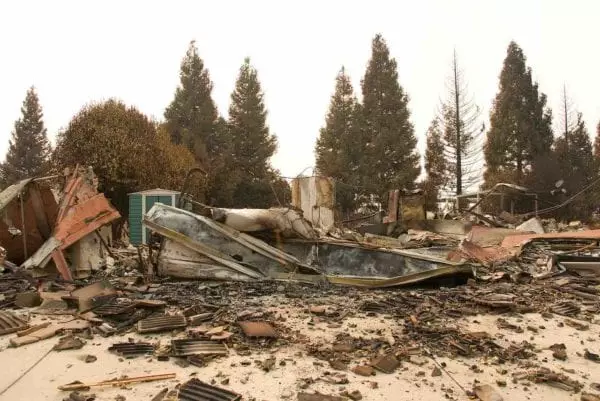
Asbestos is a growing concern in areas where wildfires are destroying old structures. Many older buildings contain asbestos materials. Wildfire destruction may put residents, first responders and cleanup personnel at risk of asbestos exposure.
Many states are responding to asbestos concerns during wildfires and post-wildfire cleanup. Asbestos regulations could slow down cleanup efforts. However, they are crucial for safety and protection from asbestos risks.
How Do Wildfires Create Asbestos Risk?
Wildfires create asbestos risk when they disturb contaminated materials. Older homes and structures may contain asbestos. This is particularly likely if constructed before 1980.
Wildfires spread easily, often destroying everything in their path. The fires may burn down houses, schools, office buildings and more. Wildfire damage can potentially disturb asbestos materials including:
- Insulation
- Drywall
- Roofing
- Flooring
Once disturbed, asbestos fibers may be released into the air. Victims may then inhale or ingest the fibers. This can cause an array of illnesses, including mesothelioma, lung cancer and asbestosis.
Buildings partially or completely destroyed can pose an asbestos risk. Asbestos may be present in debris and/or ash.
Who Is at Risk During and After Wildfires?
Anyone who comes into contact with asbestos-containing debris or ash is at risk of exposure. This includes residents, first responders and those tasked with cleanup efforts. Individuals living and working in surrounding areas may also be affected.
Partially destroyed buildings may require renovations or demolitions. Construction workers and others involved with these projects are also at risk.
States With Recent Asbestos and Wildfire Concerns
Currently, wildfires are occurring across the western United States. Many states have issued asbestos-specific warnings or concerns, including:
Boulder, Colorado recently released information on asbestos risks and requirements. In September 2020, San Diego’s Air Pollution Control District issued a Wildfire Asbestos Advisory. It advised residents to use caution when retrieving personal items from their property.
It also acknowledged even newer homes aren’t necessarily asbestos-free, because asbestos has yet to be fully banned in the United States.
The United States is not the only country with asbestos concerns after wildfires. Western Australia has also shared related safety advisories.
Asbestos Precautions After Wildfires
Cleanup crews must take special precautions when handling asbestos debris and ash. Public health officials advise homeowners not to handle asbestos on their own. Asbestos abatement workers are trained and licensed to safely dispose of contaminated material.
Many states and cities have shared their own precautions for asbestos safety, such as:
- Thoroughly wet asbestos-containing materials (ACMs) to help prevent fibers from releasing.
- Cover ACMs with plastic until proper disposal.
- Avoid mixing ACMs with other materials to avoid further contamination.
- Dispose of ACMs in specialized landfills.
- Complete asbestos sampling and testing before returning to a home or building.
- Adhere to asbestos regulations before demolishing damaged structures.
- Seek help from asbestos professionals whenever asbestos is suspected.
Individuals should inquire about federal, state and local regulations to ensure asbestos safety.
Crucial Asbestos Precautions Delaying Cleanup Efforts
Asbestos regulations are slowing down some wildfire cleanup efforts. In early October 2020, Oregon announced it was loosening asbestos rules to speed up cleanup.
The Oregon Environmental Quality Commission approved two actions to quicken cleanup:
- Relaxing requirements for handling ash and debris potentially containing asbestos.
- Allowing temporary stockpiling of asbestos debris before landfill disposal.
Eight counties are working with Oregon’s Debris Management Task Force to identify, assess and resolve hazardous waste issues with fire-damaged properties. This involves removing household hazardous waste as well as ash and debris removal. This removal is necessary before rebuilding.
The relaxation of rules only applies to those hiring licensed asbestos abatement contractors. Professional support is crucial to ensure individuals do not become exposed to asbestos.




